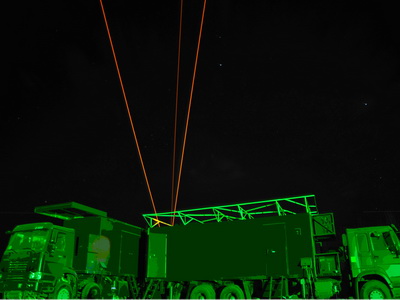First vehicular sodium wind/temperature lidar developed by CSSAR
The first vehicular sodium wind/temperature lidar in the world began to take the measurements of the three dimensional winds, temperatures and sodium atomic densities in the mesopause regions (about 85-105km altitude) successfully from 28-30 December, 2010. This new lidar was developed by the Center for Space Science and Applied Research (CSSAR), Chinese Academy of Sciences. The mesopause observation is of great importance for the near-earth space atmospheric environmental researches.
The sodium wind/temperature lidar is an advanced ground-based instrument to measure wind, temperature and sodium atom density in mesopause region. It employs a narrowband 589 nm laser to excite sodium atoms existing in the mesopause region, therefore to induce resonance fluorescence. Atmospheric wind and temperature profiles can be deduced from the backscattered fluorescence collected by the lidar telescopes. The sodium wind/temperature lidar mainly consists of the transmitter system, the receiver system, the data acquisition and controlling system, and the data processing and analysis system.
The sophisticated techniques including: the Doppler-free saturation fluorescence technique, the laser frequency stabilization technique, the laser frequency modulation technique, the pulsed laser amplification technique and the mobile platform technique have been resolved by the Laboratory for Near-Earth Space Environment Research in CSSAR. The mesopause sodium atom fluorescence signal was received first time in laboratory at Beijing in October 2009. The vehicular sodium wind/temperature lidar system was completed and installed at Langfang Near Space Atmospheric Observatory of CSSAR in December 2010. The observational experiments were done from 28-30 December, 2010. Three laser beams were sent to different directions up to the sky, and three 1-m diameter telescopes were used to receive backscattering sodium fluorescence signals in this experiment. The three dimensional winds and temperatures were obtained successfully, which shows that the first vehicular sodium wind/temperature lidar in the world has been developed successfully.



